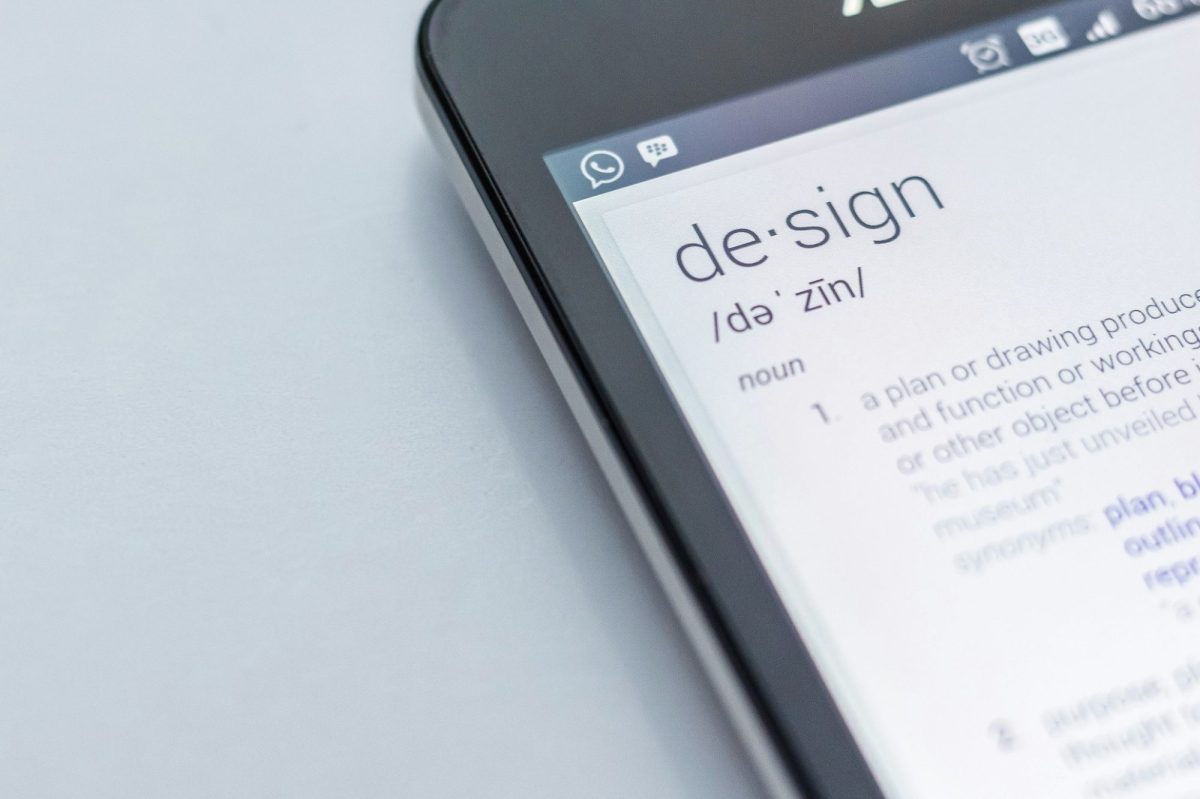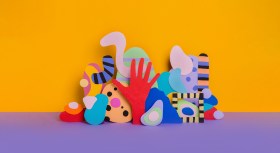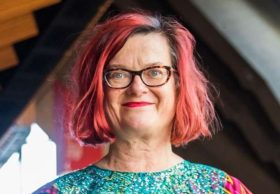Last week, Creative Australia’s request for tenders to help the agency “develop and steward a new National Arts and Disability Code of Practice or appropriate Guidelines”, as part of its new ‘Equity: the Arts and Disability Associated Plan’, closed for applications.
In this article:
This new Code of Practice is part of the Australian Government’s four-year $8.1 million Arts and Disability Plan, which is intended to “lay the foundations for greater equity in cultural life for audiences with disability”.
Targeting three key priority areas, the Plan sets out to “recognise deaf and disabled artists and arts workers as central to our vibrant arts and cultural sector”, build “strong and inclusive government and organisations” and “engage the audience with a fair, open and equitable access to the arts and culture”.
Though for some in the sector, Creative Australia’s approach to this tender process has raised red flags around the agency’s capacity to recognise the most pertinent issues relevant to artists and audience members with a disability, and to acknowledge the significant work already completed by those working on the ground for many years.
Will the new Code of Practice double-up on existing resources?
Dr Janice Rieger is an Australian Research Council (ARC) fellow, academic and artist, and has led important international research in the art, design and accessibility space for over 15 years.
Rieger says alarm bells rang for her from the moment she read Creative Australia’s call for tenders for the new Guidelines, including what she describes as some glaring omissions.
“First, it was concerning to me there was no mention of co-design in the tender,” she tells ArtsHub.
“My recent work co-designing national disability policies and a national survey we did addressed the importance of co-designing,” she continues.
“Not to see any mention of that kind of research was disappointing.”
Another question Rieger raises concerns the validity of spending significant government funds on developing a whole new set of guidelines when similar work has already been completed by those who have worked in the sector for many years.
Read: New report says social cohesion is at critical juncture
“State agencies in Australia working in arts access, international access guidelines and my own research projects have already developed and evaluated similar guidelines and recommendations over the years,” she says.
“These have been co-designed by people living with disability and have prioritised their day-to-day realities.
“So, will this new Code of Practice make these resources redundant? And, if not, how will these resources work together? None of this has been made clear yet.”
More policy for the sake of policy?
Rieger also says she can’t help but suspect this tender process will result in a ‘here we go again’ exercise where new guidelines and frameworks are written, but end up being little more than window dressing.
“Reading the tender made me feel kind of uncomfortable that we are going further down a path where policies and frameworks are becoming box-ticking exercises more than anything else,” she says.
“It makes me question how much difference these new guidelines and frameworks will make for those living and working with disability in the arts, because it feels as if we are spending all this money on writing more policies that give the impression of change. But this work is not really achieving any tangible sense of actual change for those living and working with disability in the arts.”
Rieger also wonders whether this new amount of government money could be better off spent on more infrastructural, on-the-ground initiatives as opposed to additional on-paper guidelines.
“In my experience of creating better access and inclusion for all aspects of our arts and cultural sector – inclusive of its workers and audiences – is that if people with disability can’t even get in the front door, or on stage, or use a toilet, it doesn’t matter how many national codes and guidelines we have.”
Creative Australia’s commitment to best practice
Despite Rieger’s concerns, when it comes to Creative Australia’s own efforts to make its recent tender process as mindful of the needs of those in the sector as possible, there is clear evidence it has tried its best to do exactly that.
In an online information session about the tender application process held in February 2025, Creative Australia’s Manager Strategic Initiatives and Engagement, Creative Workplaces Patrick McCarthy stressed that the agency has “tried to be thoughtful in the design of this request for tender”, adding there is a desire that “the initiatives and ideas and outcomes of this project are initiated by d/Deaf or disabled artists or workers – that the work is led by [them], and there is control around the project, and decision-making embedded into that project sits with those individuals or organisations, and that people with disability are key decision-makers through this process”.
He added, “It will be highly collaborative and … there will be different parties as we go through. But we want to make sure that people who are leading that work are supported to do it as well as they can, and are really proud of the outcomes at the other end”.
Read: Governance advisory firm appointed to review Creative Australia’s 2026 Venice Biennale process
Additionally, Creative Australia’s standard practice is to make its grant and artist opportunity application guidelines and forms available to applicants in Plain Language and Easy English MS Word documents – processes that readily align with best practice accessibility standards. However, at the time of publication, no such documents are accessible via Creative Australia’s website. Links to these documents appear, but no actual documents are available.
How accessible are these processes for people with disability, anyway?
Alongside these efforts, ArtsHub is also aware of further disquiet coming from other sections of the arts community when it comes to the accessibility of Creative Australia’s online grant application processes and its associated call-outs for artist opportunities.
ArtsHub was recently contacted by a curator who does not identify as a disabled artist themself, but who has recently worked with an organisation that supports artists with intellectual disabilities.
They raised concerns about what they see as Creative Australia’s hypocrisy as a peak government funding agency the own systems and practices of which do not appear to align with current industry standards and best practice around disability access.
As the curator told ArtsHub, “At the same time as NAVA [National Association of the Visual Arts] is committing to providing disability access, Creative Australia’s selection process is almost impossible for artists with disability.”
They described how they were recently involved as a curator for a project that was applying for Creative Australia funding, and that they “spoke directly with Creative Australia, because the artists [applying for a Creative Australia grant/artist opportunity] were supposed to submit all of their information without any assistance from an organisation”.
Knowing this kind of work would be impossible for the artists involved, the curator was told they would have to register their organisation’s managing director as the project’s lead artist, which they felt compromised the project’s integrity and was not an accurate reflection of the project.
As the curator told ArtsHub, “We shouldn’t have had to do this… The artists should have been allowed to have the academic support required [to complete the application process].”
The curator also expressed frustration at having “to sit through an hour-long video presentation [application information session] where Creative Australia members went to great lengths to describe their appearance, where they are sitting – describing all these politically correct things [around acknowledging non-sighted people and people with impaired vision]”, only to discover “how impossible it would be for people with disabilities to be able to submit their work [application]”.
As they told ArtsHub, “It made me quite cross that people’s artwork will not be seen because they would not be allowed assistance for the complicated administration involved with the submission process.
“I’m really disappointed with the lack of visibility of artists with a disability, and I think Creative Australia needs to have a good look at itself and its goals.”
Creative Australia was contacted for comment and provided the following statement:
“The development of a National Arts and Disability Code of Practice or appropriate Guidelines will be disability led, with d/Deaf and disabled Australian artists, art workers, screen practitioners and gamemakers.
“The request for tender calls for applicants to propose their approach to undertaking this work. However we anticipate this would include a highly collaborative and consultative co-design approach.
“We acknowledge and respect that there are many existing resources in the sector. The successful tenderer will access existing research and resources to ensure that the work is not a duplication of this work, but rather a pooling together of existing and new resources that are maintained and evaluated over the life of the Plan so they remain responsive and relevant. Additionally, the Australian Government’s ‘Equity: the Arts and Disability Associated Plan’ (ADAP) identified the need for a nationally consistent approach in order to drive change across all art forms and levels of the sector. This is where this work differs in scale and approach to previous work undertaken.
“We are committed to listening to feedback from the arts and disability sector and ensuring greater access to the arts for all Australians. We provide a number of access options and encourage people to contact us to discuss their applications and how we can best support them to apply.”





